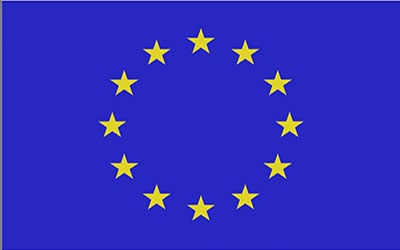Common spaces with Roma prisoners and prospective teachers in Greece
- Written by Cospirom Administrator
- Published in Roma Prisoners & Prospective Teachers
- Permalink

Τwelve 3-hour workshops were implemented with the mixed groups of young Roma inmates and students/prospective teachers, supported by facilitators/researchers within the framework of the CoSpIRom program. The workshops took place in the Event Hall of the Special Agricultural Detention Center for Youth in Kassavetia, in Almyros, Magnesia. Initially, six three-hour workshops took place from May to June 2019, during the first academic year and another six three-hour workshops were implemented during the second academic year, in June 2020.
More specifically, in the first six workshops (May-June 2019) the following stages were covered:
• A first acquaintance between young Roma inmates, students-prospective teachers and researchers and the first attempt to form a common space through ice-breaking techniques and team building exercises.
• An introduction of a fairytale from the Roma community, which became the ground to cultivate mathematical and linguistic literacy through dramatic art.
• The process of exploring the fairytale by inviting the group to jointly shape and remodel its content, through improvisations and dramatic art techniques, while indirectly promoting and encouraging mathematical and linguistic literacy.
• The formulation of a final oral and written text in the form of a play, based on the initial stimulus (a tale from the Roma community).
• Rehearsals for the show.
• Critical approach to the process.
• Reflection
• Final rehearsal of the theatrical event.
In the next six workshops (June 2020) the following were attempted:
• A first acquaintance between young Roma inmates, students-prospective teachers and researchers and the first attempt to form a common space through ice-breaking techniques and team building exercises, as the composition of the first group had changed due to the mobility of inmates and students.
• Utilization of a community-building circle to strengthen the team, as a restorative approach.
Sharing of individual narratives, school experiences and expectations of young Roma inmates and students-prospective teachers, as an effort to identify common and diverse experiences and attitudes between the two groups.
• Enhancing language literacy through storytelling.
• Promotion of mathematical literacy through drama in education techniques.
• Highlighting social inequalities through group life stories.
• Devising the formation of an artistic event based on the life stories and experiential narratives of the team members in order to highlight the need to eliminate social inequalities.
Each set of workshops culminated in a performance-presentation of the team’s work open for the rest of the inmates and the prison staff. During the performances, young Roma inmates and prospective teachers had the opportunity to celebrate the process of building common spaces, to share their experiences and attitudes, common or different, to express themselves in an equal way and to empower their identity and self esteem.
From the first moments that the two groups came together, art’s potential to overcome obstacles and break the ice was immediately felt and realized. We used drama based techniques to encourage people to get to know each other and build trust among them. From basic name games to interviews and presentations of each other, the participants- young offenders and prospective teachers, seemed to enjoy these drama based exercises and to fully make use of their potential; to help build a team where everyone is different but participates equally in order to support collaboration and group creativity. Such exercises that help to build and raise the team’s strength were used at the beginning of every session. Drama techniques however were used more and more as the weeks went by and the team explored and developed the suggested material. Drama exercises and games that promoted improvisation, the creation of small scenes with dialogue or with movement and pantomime, research on the characters, their past and their desires for the future, relationships amongst characters and collective improvisations that constructed the ‘world’ of the play were used during the preparation of both performances. The team participated as a whole and everyone was particularly eager to enhance the performance and improve the final product, therefore, new things were added every time, in every rehearsal. The final product both times included, except from the scenes and dialogues which occurred through improvisations, several types of dancing and singing as well as drawings and collectively created banners that we used as part of the show. Both performances acted as a celebration of the common space that was created at the beginning of the sessions and was gradually enhanced to finally include, apart from the participants, the teachers and the researchers, the audience that was actively included in the show and the prison’s officers and employees who were present at the performance.
This process was an extremely fruitful effort to create common spaces and, therefore, is considered highly successful. Three different groups; young Roma inmates, students-prospective teachers and researchers felt safe and confident to share experiences and concerns and through this interaction, reflected on established beliefs, transformed their views away from stereotypes and equally build and nurtured a vivid and diverse common space, that in turn reciprocated with a sense of empowerment for all.











